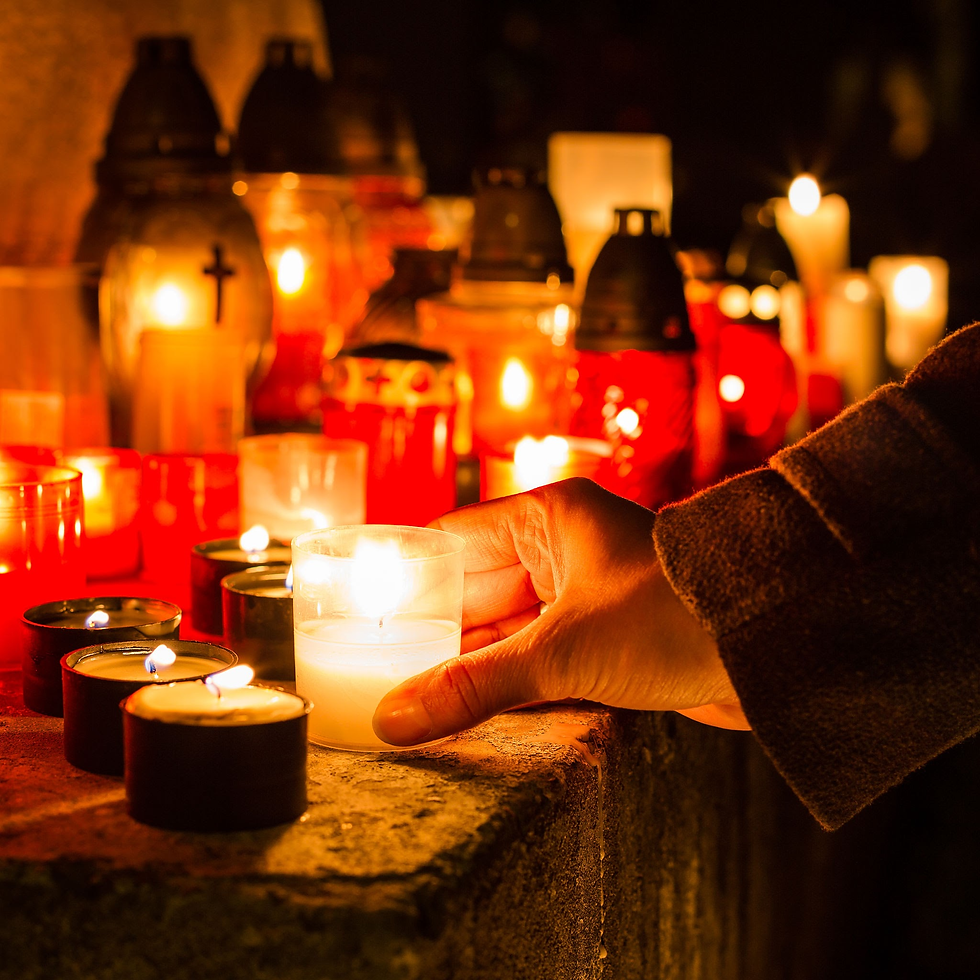Halloween, sacred days abroad blend religious traditions, pagan fun, new and old customs
- Keller Keller
- Oct 30
- 3 min read
Updated: Nov 5

STORY By CHRISTENE MEYERS
PHOTOS By BRUCE KELLER
"The Carpe Diem Kids"
ALL THE WORLD seems to enjoy a celebration, be it pagan inspired or religious based. This time of year epitomizes that. Although Halloween and autumn's religious holidays are not technically related, they occur around the same time. Besides Halloween, All Saints Day and the Day of the Dead are famously celebrated in many countries around the world.

THESE AUTUMNAL holidays combine traditions and customs, sometimes religious, often pagan inspired, mostly for fun and a chance to enjoy the company of friends and family.
Halloween is celebrated differently worldwide, with its roots in ancient Celtic traditions. In North America, it's known for costumes, trick-or-treating, and haunted attractions.
Mexico, Puerto Rico and other places blend Halloween with All Saints Day Nov. 1 and All Souls Day, Nov. 2. These days honor saints and remember the deceased. In Mexican culture, Dia de los Muertos is a joyful, sacred observance of the deceased with food, music, photos, costumes, and memories. Mexico City has a huge, popular Day of the Dead parade Nov. 2.

ALL SAINTS DAY is celebrated in historically Catholic countries, especially in Europe and Latin America, and is a public holiday in many, including Spain, France, Italy, Poland, Portugal, Mexico, and the Philippines. Customs vary, but often involve visiting graves, lighting candles, and offering flowers to honor saints and deceased loved ones, with variations seen in the celebrations in Mexico, the Philippines and elsewhere.

WE WERE pleasantly surprised to find Halloween celebrated in Rome, Lisbon, Barcelona and San Juan recently -- with plenty of spooky charm. Halloween has become increasingly popular in Portugal over the years. We don't think of it as a traditional Portuguese holiday, yet we were greeted in our hotel with a display of carved pumpkins. Back in the states, neighbors and relatives carve them too, and collect treats door to door as we did as kids.

The influence of global pop culture, advertising and locals of festivities have made Halloween a growing trend around the globe. Throughout southern Europe, we found eerie decorations, haunted events, trick or treaters on the streets and other lively activities. In some rural areas in southern Europe, children participate in a tradition called Bread for God. On the morning of All Saints' Day, kids go door-to-door asking for cakes, sweets, or small gifts, much like our trick-or-treating tradition, but with a more spiritual undertone and treats supposedly shared. As Halloween becomes more popular, it blends with these traditions, creating a unique fusion of religious based culture and modern Halloween festivities.
*********************

UP NEXT: While we're celebrating, come with us to a Yorkshire fete, Guy Fawkes Day. We join friends who celebrate the failure of the Gunpowder Plot of 1605. Fawkes was one of a disgruntled group of English Catholics involved in an elaborate scheme to overthrow government. He was born and educated in York before deciding to off the King and blow up Parliament. It's really a chance to have a party, invite friends for supper and fireworks, burn a large bonfire and burn Fawkes in effigy. Bruce Keller lit the flame.






Comments